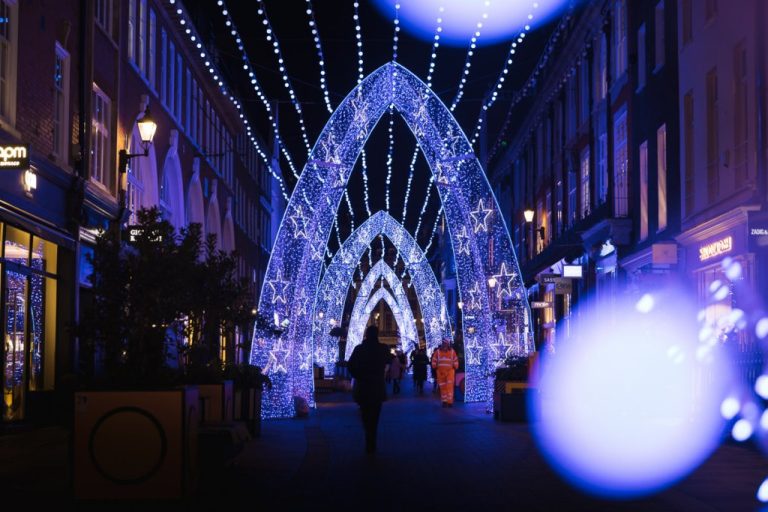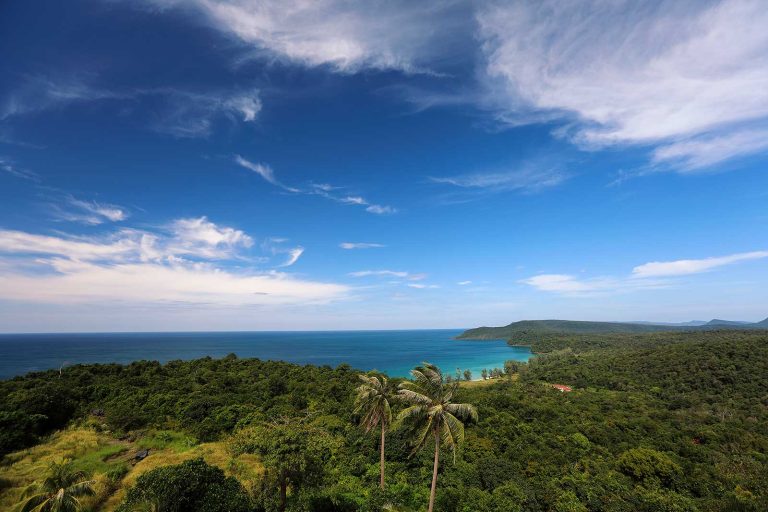With imposing castles and intriguing caves lining forested river valleys, there’s a host of interesting things to do in the Dordogne. Here is our pick of the land of medieval villages.
To the English it’s the Dordogne, to the French it’s Périgord.
As a popular destination for Brits, The Dordogne is what the English imagine rural France to be in their bygone fantasies. Attractive hill country with meadows rich and green, charming villages sympathetically restored, romantic châteaux peering down onto curving rivers framed with verdant trees.
With the walnuts abundant, the truffles fragrant, the bread always oven-fresh and wine a very serious affair, there’s a lot to love about the Dordogne. There are also plenty of great things to do.
Visit imposing castles via a boat cruise down the River Dordogne, stroll a charming town untouched over the centuries or wander immaculately maintained gardens. Encounter the region’s prehistoric past or peruse the stalls of bustling village markets.
Our guide to the Dordogne covers the top experiences, goes a little off-the-beaten-track, tries the local tipple, and discovers quality French cuisine.
It may be an English fantasy, but it’s well worth realising.
Booking your trip via the links on this page (or on our book page) will earn us a small commission, at no extra cost to you. Thanks for your support – Paul & Mark.
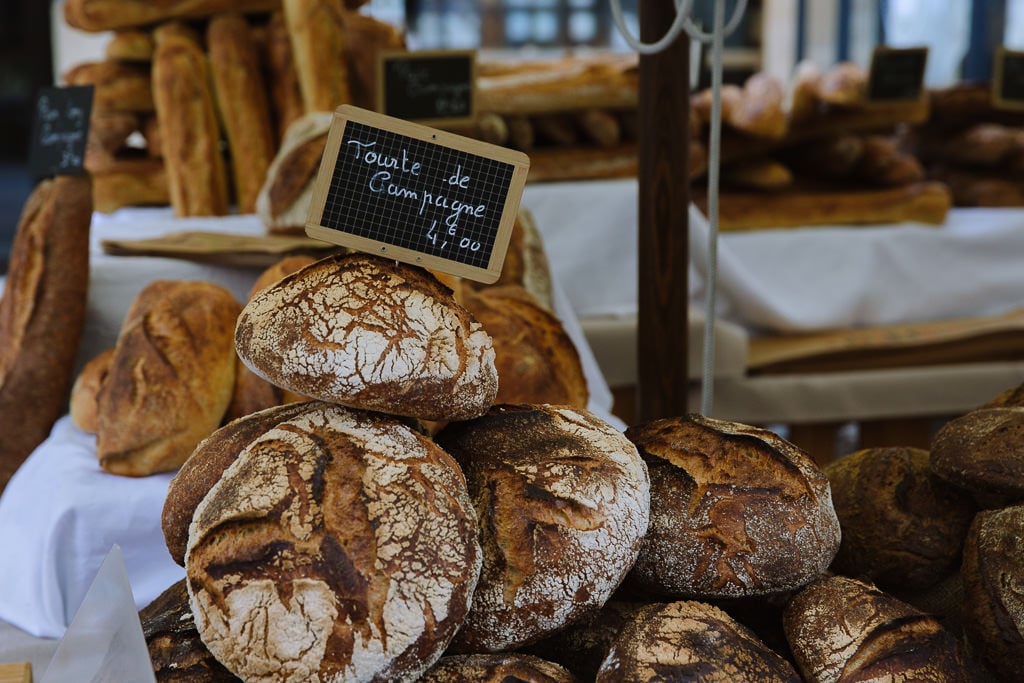
IN THIS GUIDE
WHAT TO DO IN THE DORDOGNE, FRANCE
1 – SAIL ON A GABARRE PAST TOWERING CASTLES
The basin of the Dordogne River is a UNESCO Biosphere Reserve. Recognised for its well-preserved natural setting and exceptional cultural heritage, it’s a place of graceful beauty. Medieval castles, ominous and forbidding, perch on limestone cliffs. Unchanged for centuries, they continue to guard the sweeping waters, miles of forest, and tiny villages that lay below them.
There are few better ways to take in the scene than on a ‘Gabarre’.
These flat-bottomed boats were used to transport wine and agricultural goods along the river to Bordeaux, where they would be shipped across the world. Today they transport visitors through remarkable scenery.
The best place to pick up your Gabarre is La Roque-Gageac, a beautiful village nestled into the foot of a dramatic limestone cliff. The 1-hour tour run by Gabares Norbert offers great views of the village, spots wildlife along the shore and ends at the towering medieval fortress of Castelnaud-la-Chapelle, before returning to La Roque-Gagaec.

2 – ADMIRE THE TOPIARY AT MARQUEYSSAC GARDENS
The 19th-century stone-tiled Marqueyssac Castle is perched on a limestone cliff, just above the Dordogne River. But remarkably the great views are not its main selling point.
In 1860, the owner began planting boxwood trees in the garden of the castle. Today there are over 150,000, each hand-crafted into a mesmerising array of sweeping contours and interlocking forms making Marqueyssac gardens a must-see on any Dordogne itinerary.
The most impressive structure of hedges surrounds the house, but the entire rocky limestone summit is worth exploring. Walking paths head past rockeries, cute huts and a series of arches.
To the west, views of Beynac Castle dominate the landscape, while to the south, Castelnaud-la-Chapelle stands much as it did hundreds of years ago.
There are three paths to choose from, but we suggest taking the clifftop path (La Promenade des Falaises) to the Belvedere at the other end of the rocky spur and returning via the heights walk (La Promenade des Hauteurs).
Allow at least 1 hour to explore, longer if you want to take in the remarkable views from the café.
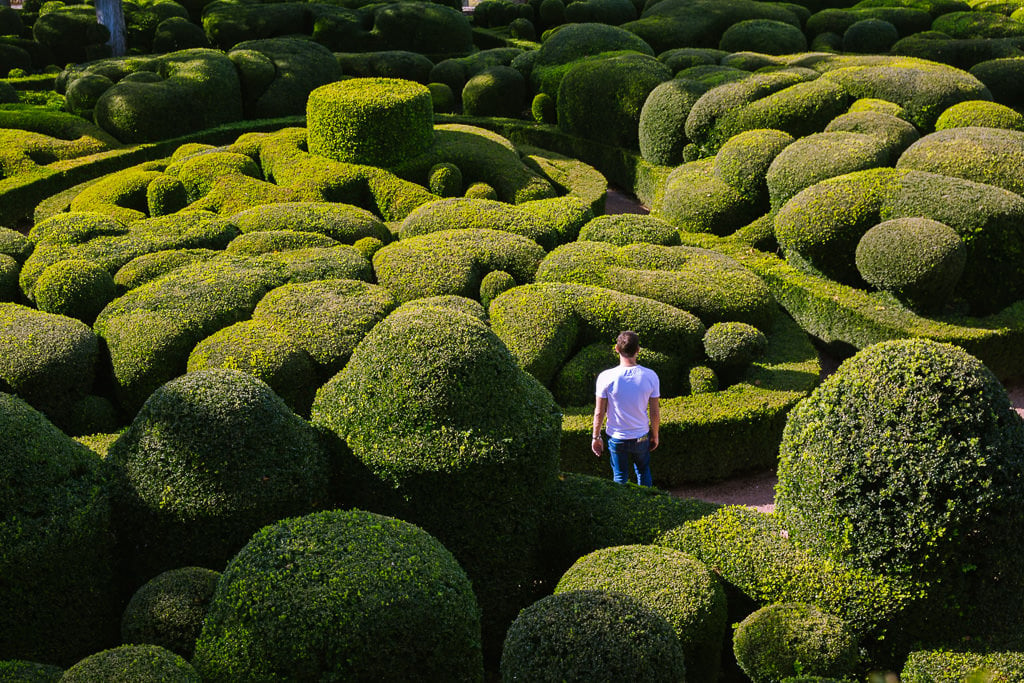
3 – STROLL THE MEDIEVAL STREETS OF SARLAT-LA-CANÉDA
Founded in the 9th century by monks trying to hide religious relics, Sarlat-la-Canéda was established a few kilometres away from the busy Dordogne River to maintain secrecy. However, its strange position in a dell with few natural defences, hasn’t stopped it from thriving.
Today, the pedestrianised centre is rich with 14th-century architecture. Saint-Sacerdoce Cathedral with its mix of architectural styles dating from the 9th century is fascinating, as is the Lantern of the Dead next door.
The Church of Saint Mary has been converted into a mix of old and new by French architect Jean Nouvel who added 15-metre steel doors and a glass elevator that whisks visitors 35 metres up to an observation deck overlooking Sarlat (€5).

WE’D LOVE YOUR SUPPORT
If you appreciate our content, here are some ways you can support us.
1 – FOLLOW US ON INSTAGRAM
2 – USE OUR BOOK PAGE
3 – BUY US A COFFEE
The highlight of Sarlat-la-Canéda, however, is the local market, filling the medieval streets with fresh produce, inviting aromas and energetic hubbub.
The market is held Wednesday morning and all-day Saturday. There’s a night market on Thursday in summer, a Christmas market throughout December and a Truffle market in January.
For fine food in a lovely street at the end of the day head to L’Adresse.
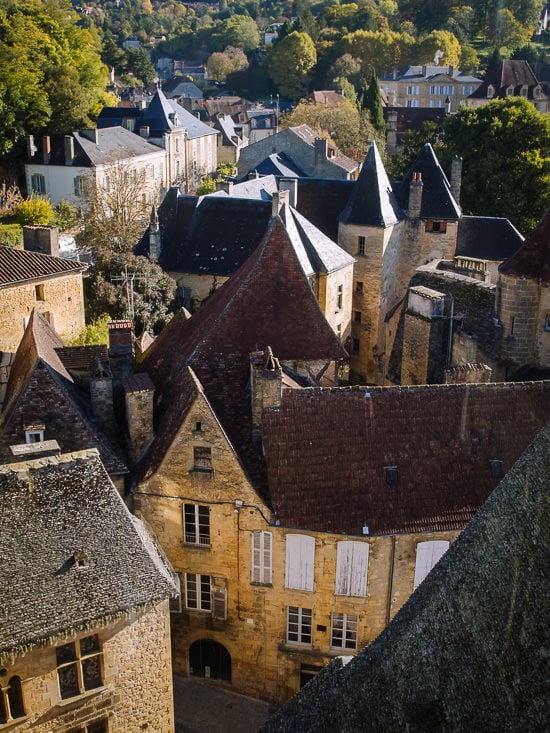


4 – GET 360 VIEWS FROM CHÂTEAU DE BIRON
Familiar with troubles throughout its long history, Château de Biron began as a fortification castle in the 12th century before being transformed with renaissance comforts in the 15th century.
After the French Revolution, it fell into neglect until it was purchased by the French state who cleaned it up and open the doors to the public.
There’s a beautiful chapel on the grounds built over 2 levels so the nobility could be closer to heaven. In the main building, tapestries adorn huge stone walls and contemporary art exhibitions are displayed under vaulted ceilings.
While most of the rooms in the château remain unfurnished, it’s nonetheless a top attraction in Dordogne, mostly for the spectacular views from the terrace. If you can time your visit for a clear day as close to sunset as possible, you’ll be treated to excellent views of the surrounding landscape: a patchwork of wooded areas and farming fields dotted with ruins and relics.
The views up to the château from many directions as you approach is special too.
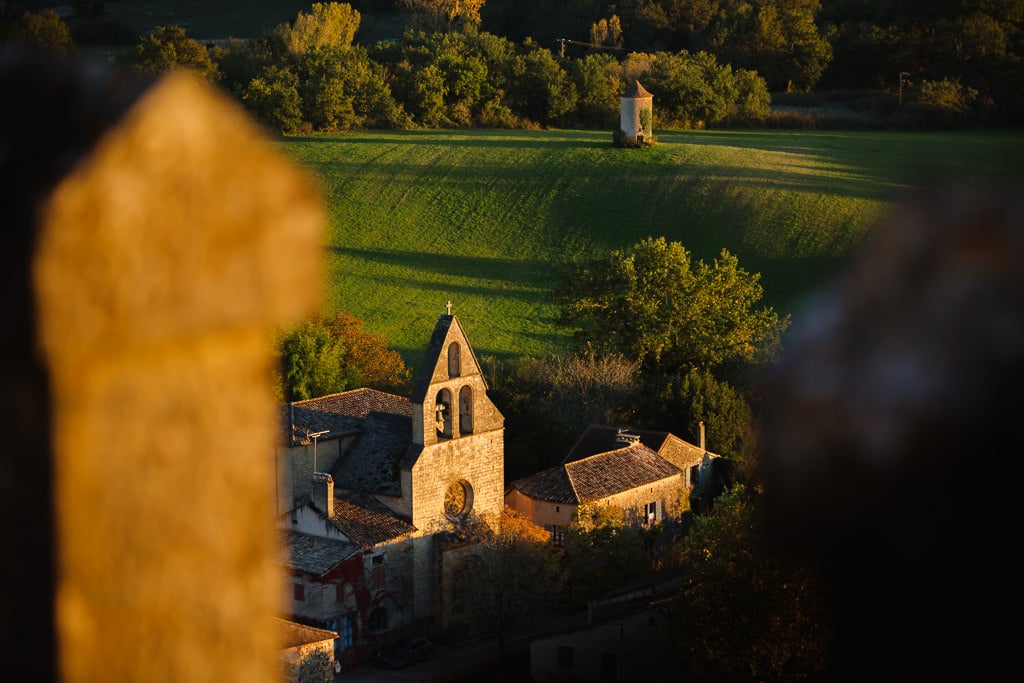

5 – ADMIRE PREHISTORIC CAVE PAINTINGS AT LASCAUX
On 12 September 1940, just south of Montignac, four boys followed their dog down a narrow entrance and into a cave. Inside, they discovered one of the most important prehistoric sites in the world. The entire cave structure (named Lascaux) is packed with paintings, mostly of animals and well over 1,000 engravings. Evidence suggests the paintings are around 21,000 years old, making them one of the oldest cave paintings ever discovered.
Today, there are four versions of Lascaux. The original cave has been closed to the public since 1963 due to damage. A copy of the original works was painstakingly created in 1983 (Lascaux II) and another mobile copy (Lascaux III) is transported around the world.
In 2016 Lascaux IV opened in a gleaming new visitor centre at the base of the hill where the boys originally made their discovery.
Lascaux IV is another copy built underground with meticulous attention to detail which recreates the entire cave network, using the same methods that were used to produce the original paintings. The most remarkable area is the ‘Hall of Bulls’ where black and brown/red paintings wind around the ceiling of the cave.
Despite being a copy, it’s a mesmerising experience. Tours are guided and last 1 hour.
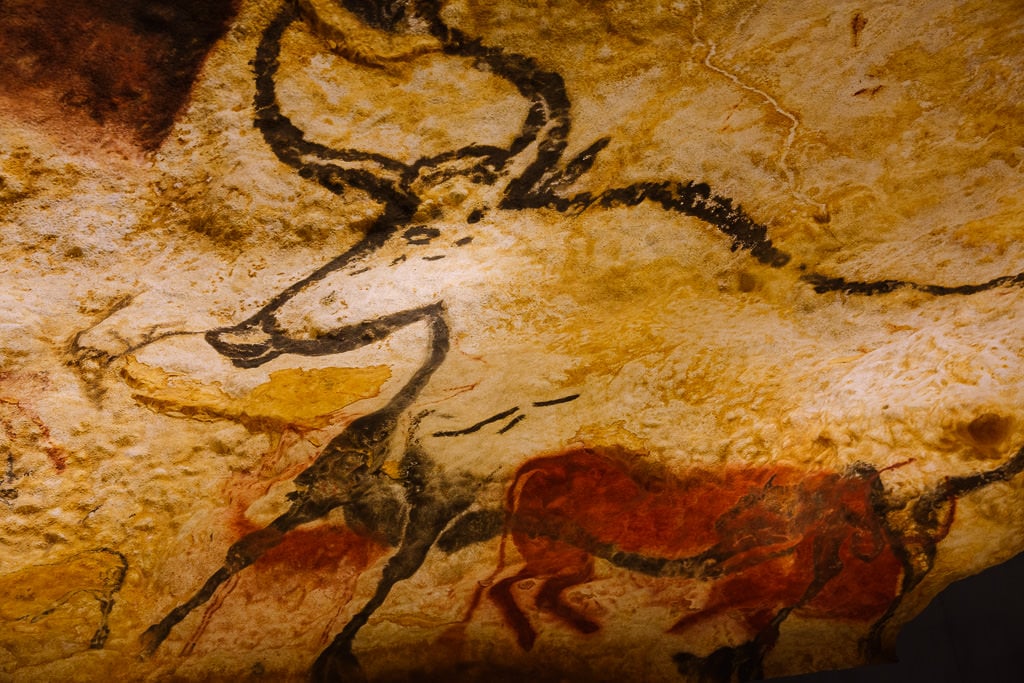
6 – WONDER AT THE BEAUTY OF GROTTO DU GRAND ROC
Prehistoric cave paintings are not the only things hidden under the ground in the Dordogne. As a natural work of art, millions of years in the making, Grotto du Grand Roc is a magical place to visit.
The narrow cave weaves through an impressive display of stalactites dripping from the ceiling, stalagmites rising to meet them and helictites escaping horizontally between the two.
These strange formations have been protected for so long that rarely-found triangular crystals have formed in pools of water in various locations throughout the cave.
The place is beautifully lit with soft light, and although there is some protective meshing in a few places, it’s easy to capture a keepsake with your phone.
Tours last 45 minutes and run every 15 minutes with extremely knowledgeable guides whose enthusiasm for the cave you can’t help but absorb.


7 – POTTER THE SUNDAY MARKET AT ISSIGEAC
Issigeac is a well-preserved medieval village with winding narrow streets that curl towards its historic centre. The best time to visit is on Sunday when the local market transforms the village into an artisanal hub. Laneways fill with local crafts, seasonal produce and flowers ready to burst into bloom.
Although smaller in winter, over the summer months, the market consumes the whole village, making it one of the prettiest to visit in Dordogne.
As you stroll around the market soaking up the atmosphere, take a moment to appreciate the quirky architecture. The timber-framed ‘Maison des Têtes’ and ‘Mushroom House’ are particularly interesting.
For a coffee pop into Le Lion d’Or where old farming equipment hangs from the ceiling in a wood-panelled room. If the queues are anything to go by, try the bread at Au Bon Pain.

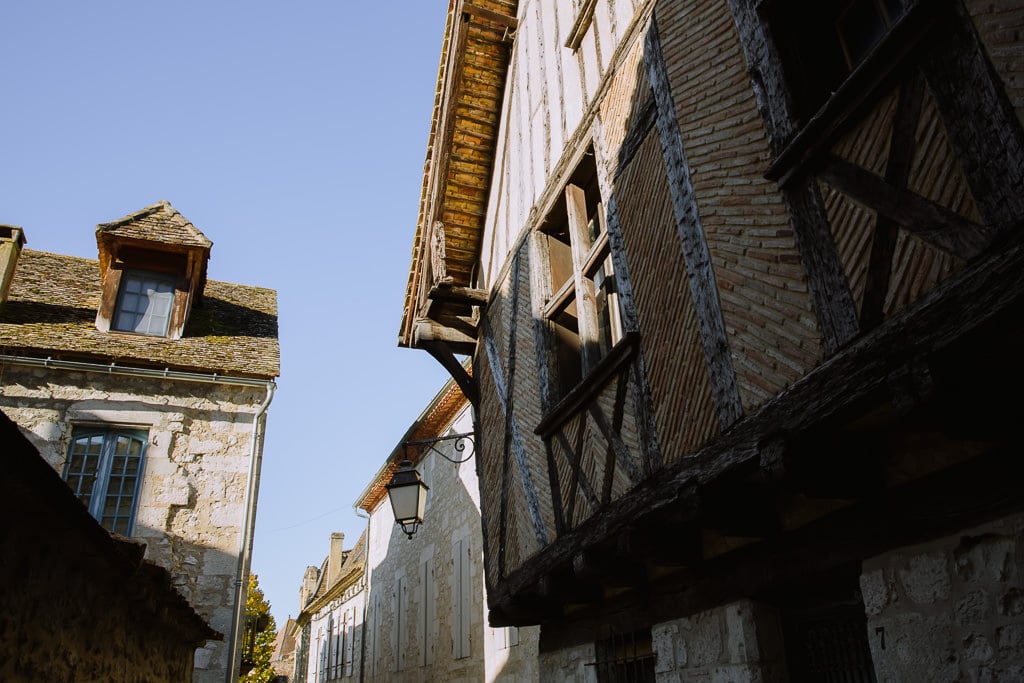
8 – POP INTO A CUTE DORDOGNE VILLAGE
Two of the best villages in Dordogne are Issigeac and La Roque-Gageac, mentioned above, but there are many more to pop into that are full of quaint charm.
Domme is an extremely well-preserved bastide medieval town with views over the Dordogne River, but it’s very well-known and parking is limited so it can be a bit overwhelming.
Instead, we’d recommend Beynac with its narrow twist of streets that climb up the hill to its imposing 12th-century castle; Saint-Léon-sur-Vézère with its picture-perfect honey-coloured stone set on an attractive curve of the river; or Monpazier with its 13th-century market square that has been barely touched since it was established.
For ambitious settings, Rocamadour is known for its selection of religious buildings assembled on a clifftop, and the gorgeous castle of Turenne overlooks one of the most beautiful villages in France.
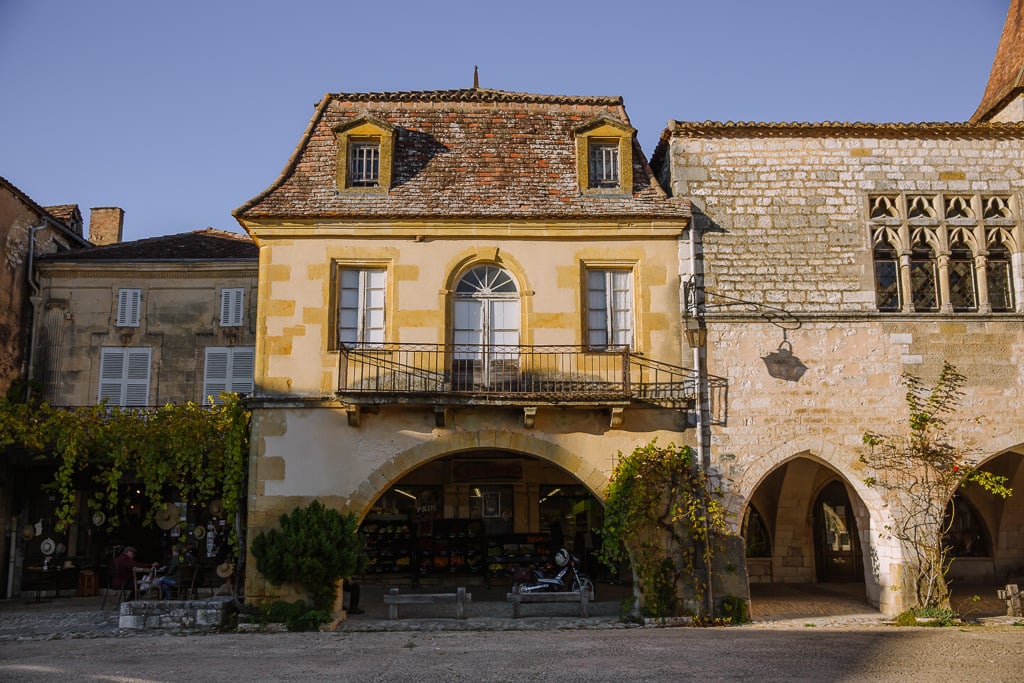
9 – STROLL TO PRETTY CHÂTEAU DU COMMARQUE
The Vézère Valley has attracted settlements since Palaeolithic times when early man followed reindeer down from the plateau to drink from a natural spring that was known as ‘the source’. Pagans revered it for its magical healing powers and in medieval times, a chapel dedicated to it was built alongside a castle complex on a rocky promontory of the valley.
Following the religious wars, Château du Commarque was abandoned and left to be consumed by the forest. Today the atmospheric ruins sit above the valley, and although some restoration work has been taking place, it remains beautifully untouched.
Stroll around the site and you can still witness some of its early history. Troglodytic caves where early humans and animals sheltered together are cut into the limestone rock. Under the castle, a narrow cave leads to a remarkable prehistoric engraving of a horse. The cave is closed to visitors but there’s a photo and video exhibition within the castle.
It’s a beautiful area with wonderful views. The walk from the car park through the forest to the ruins (10 minutes – slippery when wet) is lovely.


10 – CANOE ALONG THE DORDOGNE RIVER
Relatively fast-flowing and wide, the Dordogne River is perfect for canoeing. Paddling through the heart of this UNESCO biosphere region past limestone cliffs, cute villages, prehistoric caves, and stopping for lunch on a sandy beach under a medieval fortress, is a great day out.
The most dramatic section is between Vitrac and Beynac which has the most castles and excellent riverside villages such as La Roque-Gageac. However, it’s also the busiest. If you like to get away from the crowds, head further upstream to Argentat-sur-Dordogne, where the river is faster, narrower and much quieter.
In addition to the Dordogne, the Vézère River is another good canoeing option. It’s a bit wilder with less villages to stop at but there is more peace and quiet here. The views also are grand.
Canoe providers are easy to find and will rent out all the equipment for as long as you need plus provide a minibus service to shuffle you to the start or finish of your journey.
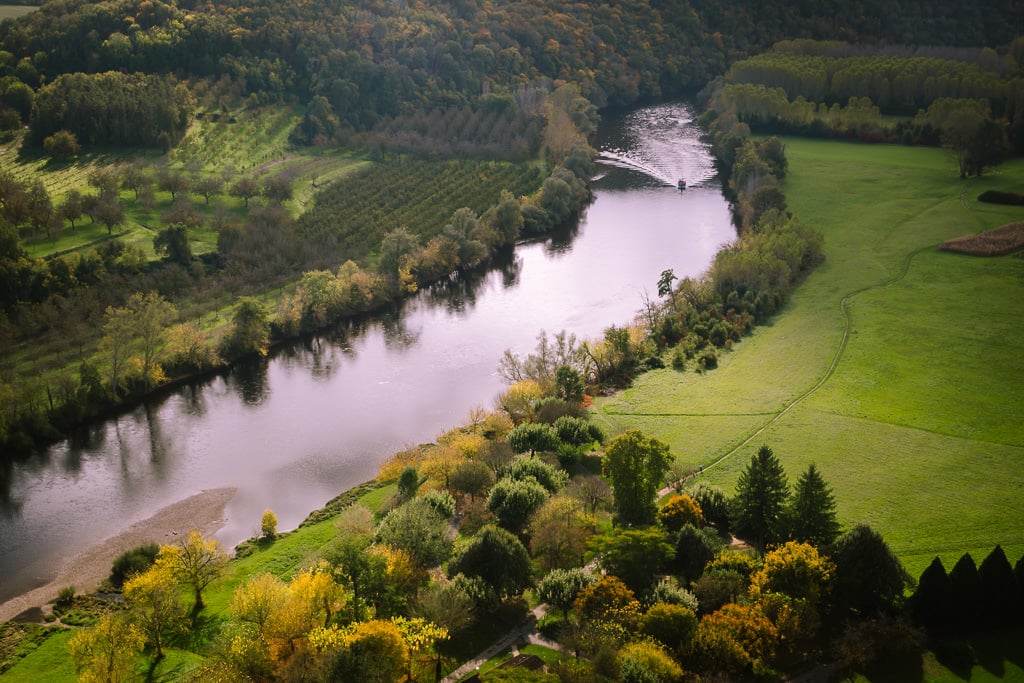
11 – TASTE THE SWEET LIFE AT MONBAZILLAC
The vines of Monbazillac stretch across a small hill a few kilometres from the Dordogne River. The mist from the river clings to the grapes in the early morning before the sun burns through later in the day.
These conditions help form a grey fungus called Botrytis Cinerea (Noble Rot) which creates a rich grape perfect for sweet wine.
Monbazillac wines are produced from mostly Semillon grapes with the addition of either Sauvignon Blanc or Muscadelle, and sometimes both.
Their vines surround the beautiful Château Monbazillac which you can pay to visit (April to October). The castle contains some interesting art and a museum to wine production, but the best reason to come is for wine tasting.
The Chateau Monbazillac values of authenticity and solidarity with the region are obvious in their passion for wine. Tastings are free and bookings are not required (something of a novelty in Europe). Sample 3 of their current favourite sweet wines, and it’s hard to walk away without buying a couple of bottles. (The tasting room is undergoing renovations until Spring 2022)

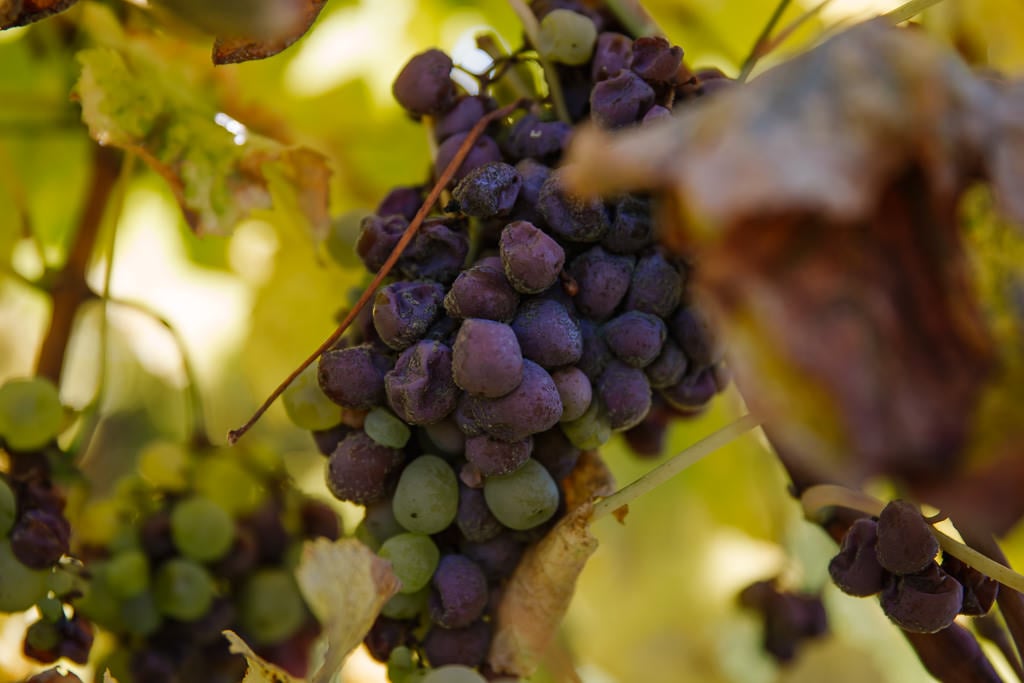
12 – SPLURGE ON DINNER AT LE 1862 IN LES GLYCINES
For a sublime taste of Dordogne, it’s hard to go past Le 1862 restaurant at Les Glycines, where respect for the local produce is evident in the careful treatment each course receives. In a contemporary but minimalised space, exquisite dishes steal the show.
We were treated to a selection of mushroom appetizers including a silky smooth velouté, mushroom mousse and mushroom pastries with beetroot jelly. The mushroom ensemble was followed up with a bread mousse (something we’ve never encountered before), then delicious homemade gnocchi with a madeira sauce.
A colourful vegetable risotto, sourced from the hotels garden, was next, before dessert which we devoured before we could register what it was.
The service was well-informed, friendly and efficient, and although they offer many meat dishes as well, it was a pleasure to experience vegetarian dining at this level.

OTHER THINGS TO DO IN THE DORDOGNE
If you’re a regular reader of Anywhere We Roam, you may have noticed that we like to be selective about what we recommend doing, picking out the best things for a great experience. However, there are many more things to do in the Dordogne that we couldn’t quite squeeze onto the list. If you have more time, here are some other recommendations.
CLOISTER OF CADOUIN
Abbey of Cadouin is on the pilgrim trail to Santiago de Compostela, but it is the Gothic cloister with vaulted ceilings and pretty courtyard that really shows off its UNESCO World Heritage credentials. There are some small sculptures and a fresco to admire, and the town is pretty too.
CHÂTEAU DE BOURDEILLES & ESCAPE GAME
Set on a rocky promontory overlooking a river, Chateau de Bourdeilles is actually two buildings: a 13th-century fortress and a 16th-century renaissance home. The kids (and adults) will be thoroughly entertained by a virtual reality game where up to four players can compete to construct the castle, escape from a prison cell, or shoot arrows into the English scum.
CASTELNAUD-LA-CHAPELLE
A magnificent 12th-century castle in a prominent position overlooking the river, Château de Castelnaud is a great place for kids with plenty of reconstructions of war siege engines, collections of armour, and scale models. In the summer holidays, there are additional activities like crossbow shooting.
HOT AIR BALLOON
Another great way to see the Dordogne’s UNESCO listed biosphere reserve is in a hot air balloon. It’s not cheap, but floating over this beautiful scenery punctuated with castles, villages, and limestone cliffs is a great way to remember the Dordogne.
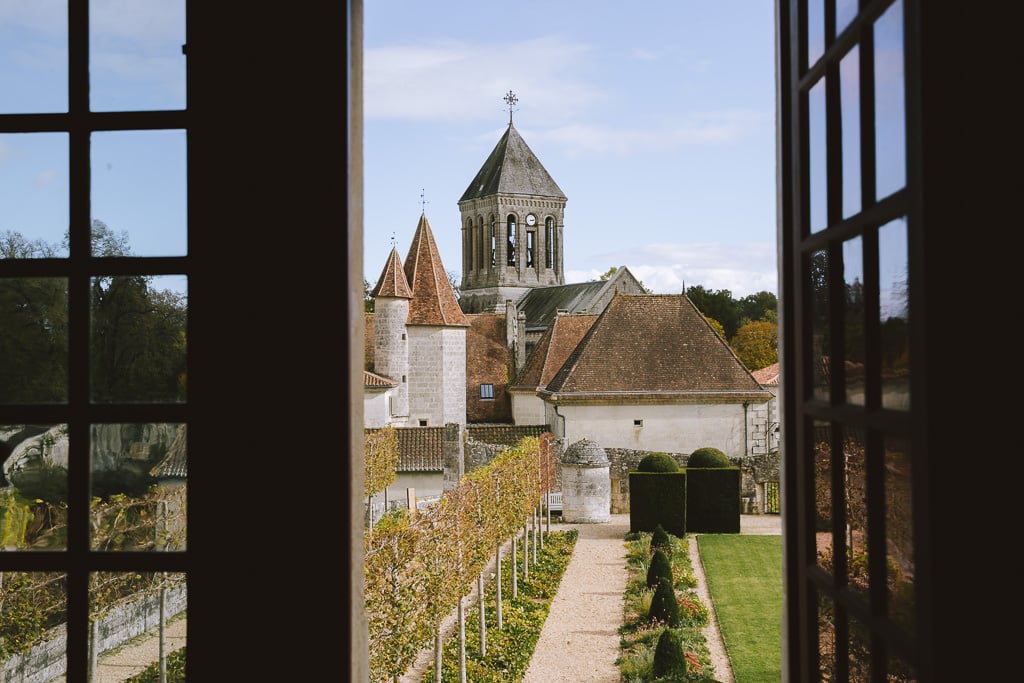
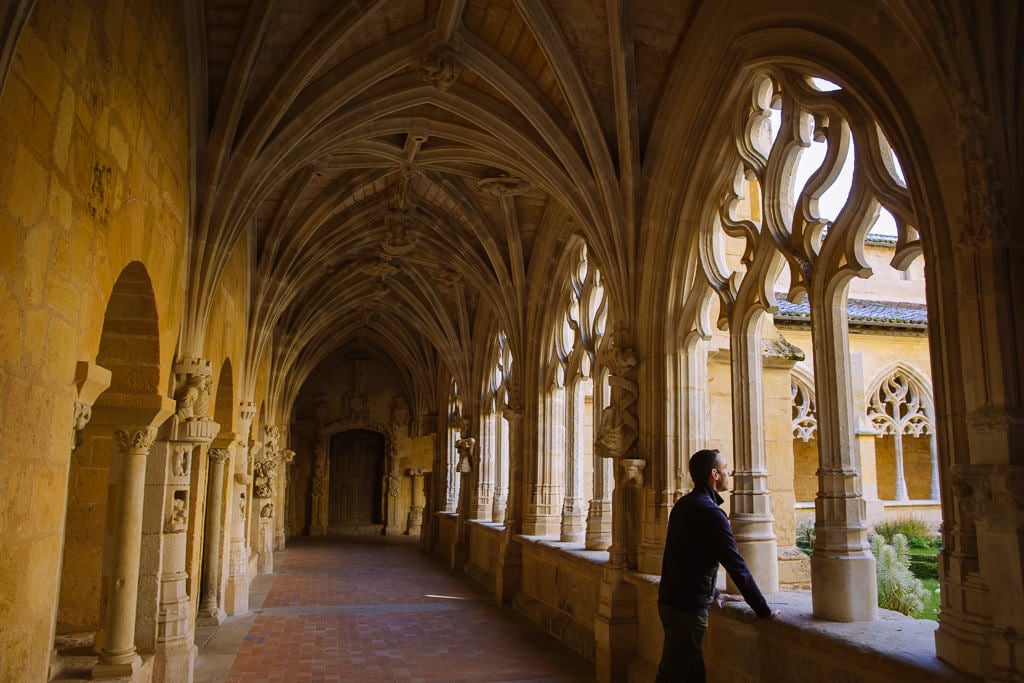
MAP / WHAT TO DO IN THE DORDOGNE
We have included our list of what to do in the Dordogne on the below map to help you find all the main attractions dotted along this glorious part of France.
How to use this map / Click on the top left of the map to display the list of locations, then click on the locations to display further information. Click on the top right corner of the map to open a larger version in a new tab or the star to save to your Google Maps.
WHERE TO STAY IN THE DORDOGNE
There are accommodation options all over the Dordogne from high-end spa hotels to atmospheric châteaux. If you intend to visit in July and August, we suggest you book a long way in advance. Here are some recommendations from us.
SARLAT-LA-CANÉDA
LA BELLE PLANE
This lovingly refurbished B&B just outside Sarlat is modern and comfortable. Some of the rooms have a terrace overlooking the hillside, and access is granted to tennis courts in the town. It’s very well located for exploring some of the many great places to visit in the Dordogne.
BOOKING.COM / HOTELS.COM
MONPAZIER
HÔTEL EDWARD 1ER
Tucked into the back streets of medieval Monpazier, this mini château is refined and classy. Despite lacking both of these qualities, we were welcomed like royalty by the Hôtel Edward 1er team. There’s an outdoor pool on a sun trapped terraced with views over the valley. We didn’t get a chance to eat in the restaurant but judging by the groans of contentment from those eating there, it must have been good.
BOOKING.COM / HOTELS.COM
LA ROQUE GAGEAC
LES HAUT DE GAGEAC
This charming B&B is in a great location with La Roque-Gageac within walking distance. There’s a small pool and hot tub, and views over this lovely part of the Dordogne. The rooms are cosy and traditional and two of them have private terraces.
BOOKING.COM / HOTELS.COM
LES EYZIES
HÔTEL LES GLYCINES
friendly and attentive service accompanies good facilities including a pretty garden, outdoor pool, spa, and gym. The food at their restaurant Le 1862 is fine dining with understated style, but they have a more relaxed bistro as well.
BOOKING.COM / HOTELS.COM
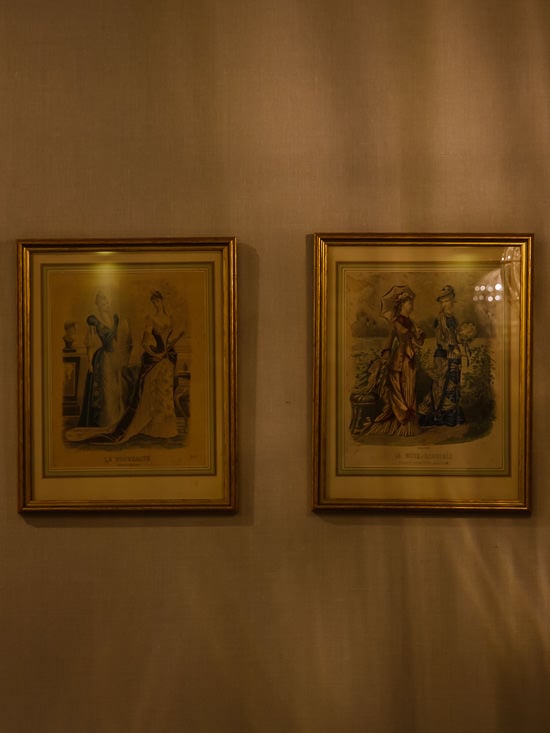
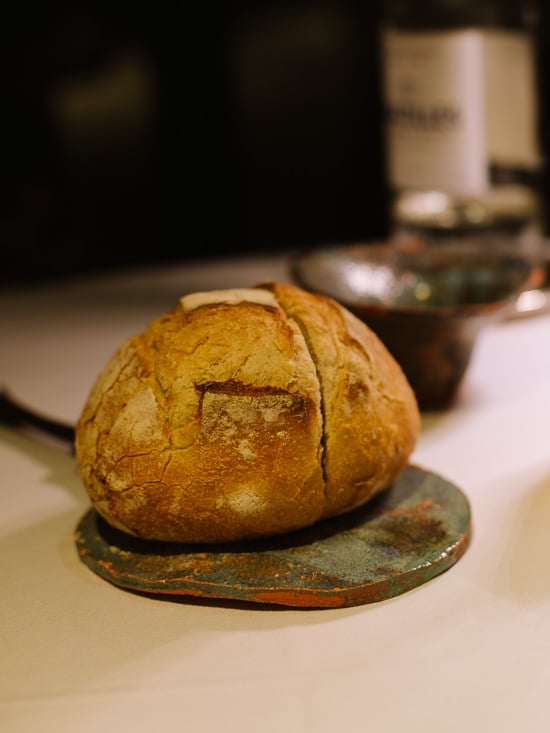
BEST TIME TO VISIT THE DORDOGNE
July and August are peak months for visitors. The summer holidays are in full swing, the temperatures reach up to 30 degrees and messing about on the river is a lot of fun. But the area can get incredibly busy. If you plan to visit over this time, make sure to book your trip well in advance.
All our trip tools can be found on our book page.
Spring is beautiful in the Dordogne and much less busy. From April flowers spread across the valleys, green shoots appear on the trees and a wealth of fresh produce bursts onto the local markets. Through May and June, temperatures steadily rise making it great conditions for hiking, canoeing, or cycling.
September is also a great time to visit with 25-degree temperatures often creating an Indian summer. Late October sees the temperatures drop, the grapes harvested and the leaves begin to change creating a gorgeous autumnal pallet.
Winter months have max temperatures of about 10 degrees in the day dropping to zero at night and some of the tourist infrastructure closes.
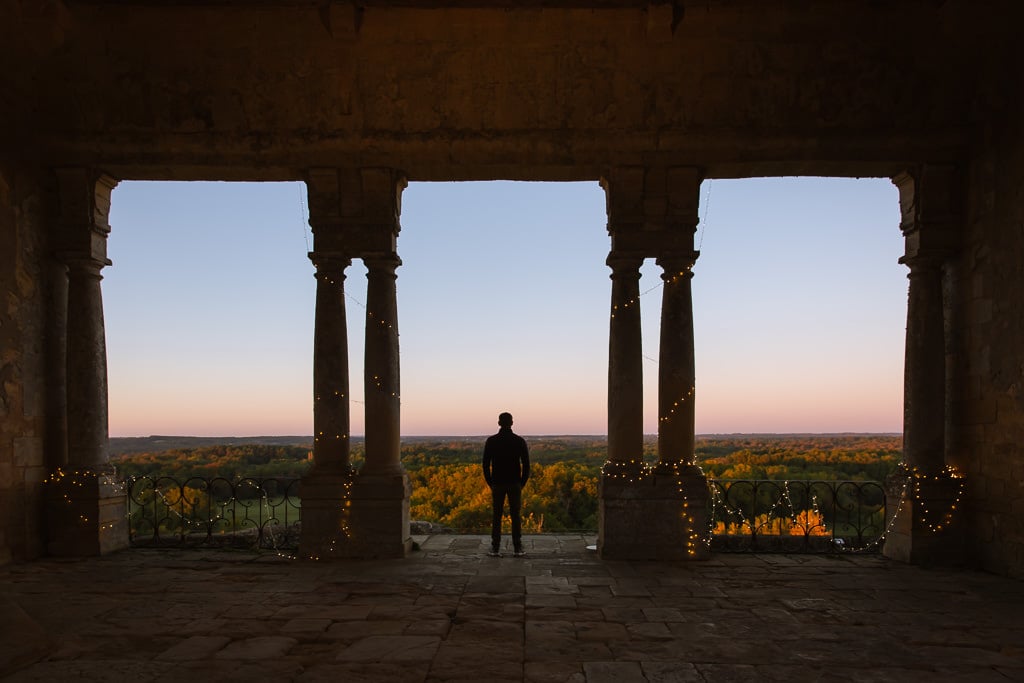
HOW TO GET TO THE DORDOGNE
The Dordogne is an area in Nouvelle-Aquitaine in southwest France.
By Air // There are a couple of small international airports serving the region. Bergerac Dordogne Périgord airport has flights to quite a few English cities as well as Rotterdam & Brussels-Charleroi.
Brive-Souillac airport has flights from Paris and London Stansted (Apr-Oct). There are two larger airports about a 2-hour drive away. Bordeaux Merignac to the west and Toulouse to the south.
By Train // Regular trains run from Paris Montparnasse station to Bordeaux Saint-Jean station (2 hours 20 minutes) but the train from Bordeaux into the heart of the Dordogne is slow taking 2 hours 45 minutes to Sarlat-la-Canéda, 88 kilometres away. It’s a nice way to arrive but in total takes well over 5 hours.
HOW TO GET AROUND THE DORDOGNE
The easiest way to do all the things in our guide is to hire a car. The Dordogne is a rural area and some of the castles and caves are out of the way with limited or no public transport.
Having said that, if you are most keen on exploring the villages, towns, and markets then a couple of train lines cross the region between Bergerac, Perigueux and Sarlat-la-Canéda.
These are supported by a good network of buses heading to the smaller villages. Split your time between staying in one of the three main centres and you can get to many of the most beautiful places in the region by public transport.
WHERE NEXT?
If you’re interested in a jaunt to the Atlantic coast in France, here are some other guides you might find useful.
Discover the charms of Arcachon Bay
Our itinerary for Paris over 3 or 4 days
Hiking in the Alps in Summer
Our 2-week Europe itinerary
// This guide was produced in partnership with Atout France and Destination Nouvelle-Aquitaine.
STAY IN TOUCH
Stay up to day with our travels on Instagram and get semi-regular updates directly to your inbox via our newsletter.
INSTAGRAM // SUBSCRIBE
SHARE THIS GUIDE
If you found this guide useful, please share it to your social media or pin it to your Pinterest boards.



